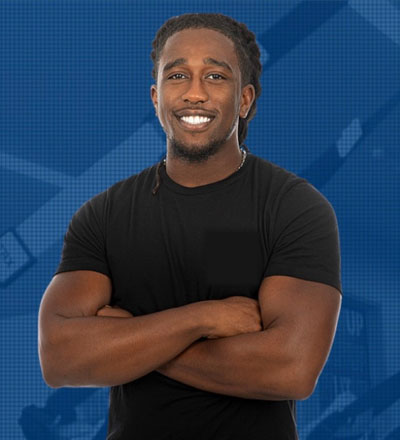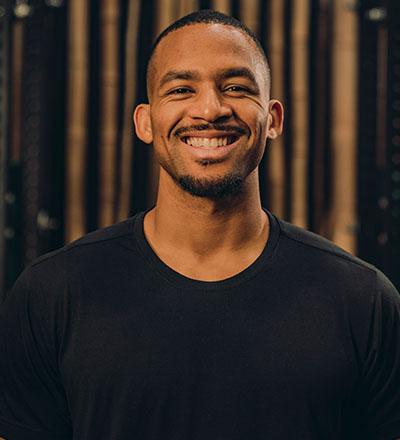Parents
Every sport has its own unique methods of training, but there are specific types of exercises and training that will help prevent injury in any athlete
Proper strength and conditioning allows an athlete to strengthen supporting muscles, even out muscle imbalances, increase mobility, correct posture, stabilize joints, learn new movement patterns, enhance coordination and peripheral skills, and so much more.
Sports are repetitive and overuse injuries are bound to happen – even in multi-sport athletes, but especially in specialized athletes. Proper strength and conditioning allows an athlete to strengthen supporting muscles, even out muscle imbalances, increase mobility, correct posture, stabilize joints, learn new movement patterns, enhance coordination and peripheral skills, and so much more.
Here are 3 important concepts to understand to help train smarter:
1. Anterior vs. Posterior Chain Exercises
Anterior chain muscles include all the muscles on the front of the body – such as pectoral and quad muscles. These muscles are often used in pushing movements – such as the bench press or squat. Posterior chain muscles are along the back of the body such as scapular, rotator cuff muscles, and hamstrings. These are most often used in pulling movements – such as the leg curl.
Understanding the difference between strengthening the anterior vs. posterior muscle chains and the necessary balance between them is crucial when strength-training an athlete. No matter which set of muscles is most used, it is imperative to keep them balanced and not allow one to have excessive development. Muscle imbalances are the fastest road to injury.
The majority of sports are Anterior Chain dominated. Taking tennis as an example, every swing is a forward motion. Not one movement, other than tracking down a lob, is a posterior movement. Anterior chain strength is vital to the performance of a tennis player. However, if tennis players don’t train the lesser-used posterior chain, they are putting themselves at risk for numerous injuries.
2. Unilateral Training vs Bilateral Training
Unilateral training – which is training one side at a time – is also an important aspect of training. This does not mean training the entire right side of the body and then the left. It means each limb or side of the body is doing the same exercise separately. For example: using dumbbells instead of a barbell for bench press.
Bilateral training uses both sides of the body to complete a lift, which allows the dominant side to assist the weaker side.
There are times when bilateral work is important and necessary, however, unilateral training is vital to develop balanced strength. It allows the right side to lift just as much as the left and vice versa. Unilateral training is also important for the added balance and stability needed within the joint. There is a time and place for bilateral training, such as a greater need for hypertrophy, but it also just masks the weaker side and allows it to carry less of the load.
3. Train Movement Patterns
Introducing different movement patterns and learning body awareness is imperative for athletes, especially specialized athletes. Injury is likely to occur when movement patterns don’t follow proper physiology. There are many factors that lead to incorrect movement patterns, such as weak stabilizer muscles, poor mobility, muscle imbalance, trying to lift too heavy or attempting something too challenging, etc.
For example, if an athlete has knees that tend to wobble in when they squat, this is a red flag for injury. If that same athlete – whose knees habitually wobble or turn in while training – jumps up for a rebound in basketball and lands in the faulty squat position, this is how several knee tears happen. Learning body awareness, landing, starting, stopping, and proper overall body movement is so important.
Sport specialization hopefully occurs once athletes are old enough to choose a sport they love and have experienced other sports and movements. Although strength training is important for every athlete to improve performance and stay healthy, it is absolutely imperative for specialized athletes. Sport specialization without proper training is detrimental to the athlete’s physical growth, safety, performance longevity, and athletic ability.
Sweat 60 Sports in Santa Monica develops youth athletes by introducing them to the following:
- Foundational Strength Training in a safe environment
- Sport Specific Strength Training and Nutrition
- Resilience through the principles of developing an ironclad mindset
Run by former college athletes we have developed a clear system that gets athletes real results.
TEAM

Specializations: Sport Specific Conditioning, Speed & Agility, Strength Training, and Functional Training.
Kevin’s passion for health and fitness derives from the success of his clients in reaching their personal goals. This extends beyond physical fitness, to helping people reach their full potential and improving their quality of life.
He is a former Division 1 athlete, holds a Bachelor of Science in Exercise Sport and Science, a certification from the National Academy of Sports Medicine, and is considered one of the top performance and weight loss specialists in Los Angeles.

Specializations: Sports Conditioning, Speed & Agility, Mobility, Strength Training and Functional Training
Jordan has a passion for helping athletes achieve their potential on and off the field/court.
Jordan was a collegiate lacrosse player and holds a bachelor of Science in Kinesiology and Sport Psychology. He has spent time working physical therapy, coaching high school lacrosse and is considered one of the top sport performance coaches in Los Angeles.

A former Division I athlete, Taylor experienced an accident that resulted in a compound fracture of his femur. Unable to compete, his interest in coaching began on his road to recovery. Thanks to his own trainer/coach, who pushed him physically and mentally— he saw what the body and mind are capable of. He specializes in speed, strength, and endurance training. When he’s not coaching, you can find him walking his dog or surfing with his wife.


Quinton is simply a lover of movement. With a background in collegiate track & field as a decathlete and post-grad endeavors in dancing and acrobatics, he takes a unique approach to the world of strength, fitness, and sports performance.




